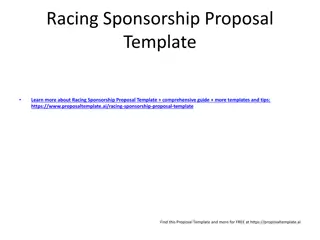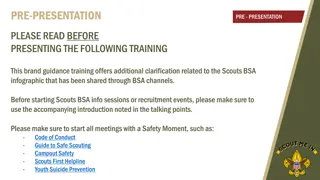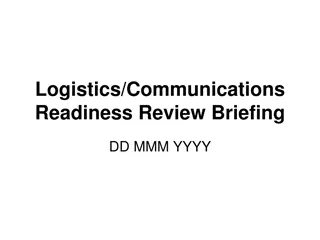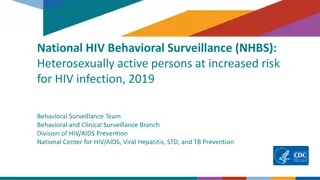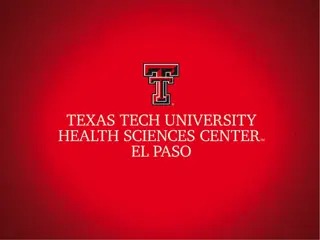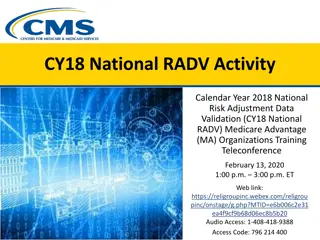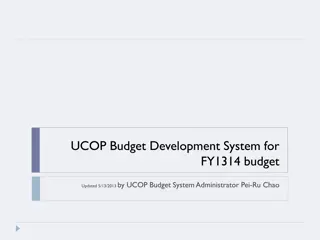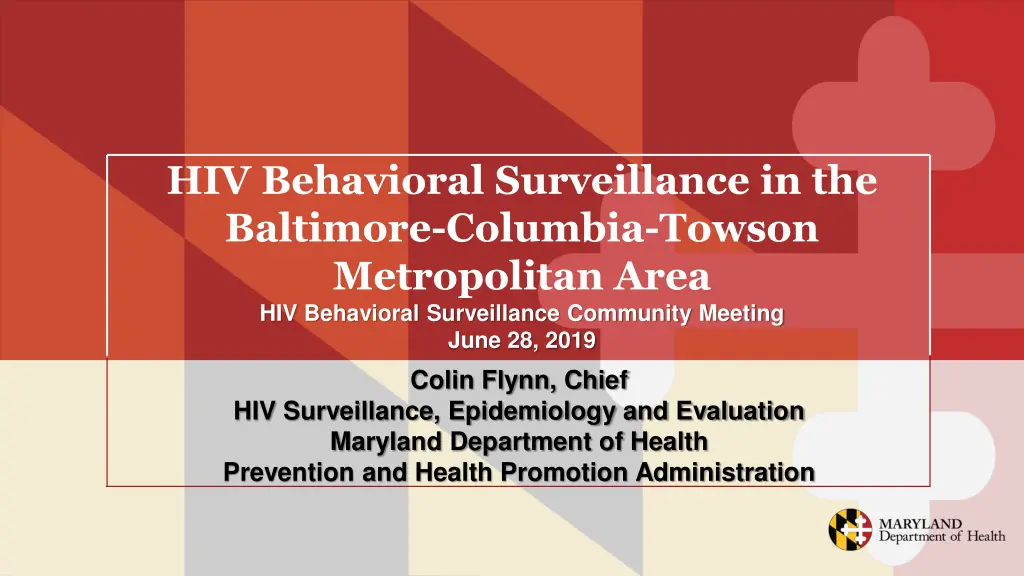
Behavioral Surveillance in Baltimore-Columbia-Towson
Explore the Behavioral Surveillance initiative in the Baltimore-Columbia-Towson metropolitan area, focusing on HIV prevention and health promotion. Understand the mission, vision, and purpose of behavioral surveillance for public health, along with details about the National HIV Behavioral Surveillance program. Discover the collaborative efforts between the Maryland Department of Health, CDC, and Johns Hopkins University in conducting behavioral surveillance activities.
Download Presentation

Please find below an Image/Link to download the presentation.
The content on the website is provided AS IS for your information and personal use only. It may not be sold, licensed, or shared on other websites without obtaining consent from the author. If you encounter any issues during the download, it is possible that the publisher has removed the file from their server.
You are allowed to download the files provided on this website for personal or commercial use, subject to the condition that they are used lawfully. All files are the property of their respective owners.
The content on the website is provided AS IS for your information and personal use only. It may not be sold, licensed, or shared on other websites without obtaining consent from the author.
E N D
Presentation Transcript
HIV Behavioral Surveillance in the Baltimore-Columbia-Towson Metropolitan Area HIV Behavioral Surveillance Community Meeting June 28, 2019 Colin Flynn, Chief HIV Surveillance, Epidemiology and Evaluation Maryland Department of Health Prevention and Health Promotion Administration
MISSION AND VISION MISSION The mission of the Prevention and Health Promotion Administration is to protect, promote and improve the health and well-being of all Marylanders and their families through provision of public health leadership and through community-based public health efforts in partnership with local health departments, providers, community based organizations, and public and private sector agencies, giving special attention to at-risk and vulnerable populations. VISION The Prevention and Health Promotion Administration envisions a future in which all Marylanders and their families enjoy optimal health and well-being. 2
Definition Behavioral surveillance, for public health purposes, is the systematic and ongoing collection of data about risk and health-related behaviors with the purpose of correlating trends in behaviors with changes in disease over time. -Lansky, et al. Public Health Reports, 2007. 3
National HIV Behavioral Surveillance (NHBS) CDC funded project Data collection began in 2004 In up to 25 metropolitan areas (has varied over time) Major divisions of metropolitan areas with the greatest numbers of AIDS cases in the U.S. 4
National HIV Behavioral Surveillance (NHBS) Funded nationally by the CDC Funded locally by MDH 2019 Year 4 of the current 5 year cooperative agreement Application for new 5 year funding cycle due in August 2020 6
NHBS Baltimore MDH contract with Johns Hopkins Bloomberg School of Public Health for field operations Dept. of Epidemiology: Frank Sifakis, David Celentano Dept. of Health, Behavior and Society: Danielle German, David Holtgrave Collaborative project of CDC, MDH, and JHU 7
NHBS Baltimore BESURE The BEhavioral SUrveillance REsearch Study 8
NHBS Objectives To assess prevalence of and trends in HIV risk behaviors HIV testing behaviors Exposure to and use of prevention services among persons at high risk for infection HIV prevalence and incidence 9
Case vs. Behavioral Surveillance Case Surveillance Behavioral Surveillance Infected population HIV positives Mandated reporting Data abstracted from medical records All diagnosed cases (N 30,000 in Maryland) Dozens of demographic and clinical variables Population at risk HIV negatives and positives Research study Data from participant interviews and blood tests 500 sampled participants per population per year Hundreds of behavioral variables 10
NHBS Target Populations Men who have sex with men (MSM) Injection drug users (IDU) Heterosexuals at risk for HIV (HET) 11
Living Adult/Adolescent HIV Cases on 12/31/17, by Exposure Category, Baltimore-Columbia-Towson MSA N=16,494 HETSEX 34% OTHER 2% MSM 35% MSM/IDU 5% IDU 24% Using data as reported through 6/30/2018 Multiple imputation was used to estimate and adjust for missing exposure category. 12
NHBS Recruitment Methods Venue-based sampling (VBS) Respondent-driven sampling (RDS) 13
NHBS Cycles MSM IDU HET Wave 1 VBS 2004-2005 RDS 2006 VBS and RDS 2007 Wave 2 VBS 2008 RDS 2009 RDS 2010 Wave 3 VBS 2011 RDS 2012 RDS 2013 Wave 4 VBS 2014 RDS 2015 RDS 2016 Wave 5 VBS 2017 RDS 2018 RDS 2019 14
NHBS Data Reports MMWR and other CDC publications Journal articles Conference presentations Planning group presentations MSM/SGL Response Team presentations MDH website 15
Maryland Department of Health Prevention and Health Promotion Administration https://phpa.health.maryland.gov/OIDEOR/CHSE Behavioral Surveillance https://phpa.health.maryland.gov https://phpa.health.maryland.gov 16

![❤[READ]❤ Deep Space Craft: An Overview of Interplanetary Flight (Springer Praxis](/thumb/21511/read-deep-space-craft-an-overview-of-interplanetary-flight-springer-praxis.jpg)



